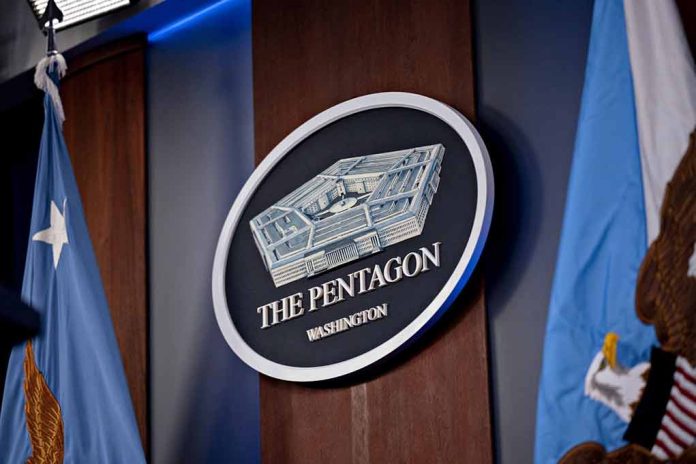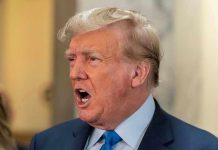
North Korea’s furious condemnation of President Trump’s “Golden Dome” missile defense system reveals the communist regime’s fear that their nuclear arsenal could soon become obsolete against America’s cutting-edge space technology.
Key Takeaways
- North Korea has labeled President Trump’s “Golden Dome” missile shield as a “very dangerous threatening initiative” that could trigger nuclear war
- President Trump has secured initial funding for the space-based missile defense system, calling it “very important for the success and even survival of our country”
- The missile shield threatens North Korea’s nuclear deterrence strategy, potentially prompting them to develop new countermeasures
- China and Russia have joined North Korea in expressing strong opposition to the American defensive initiative
- Analysts note the system faces significant technical, political, and financial challenges despite its strategic importance
North Korea’s Hostile Response to American Defense Innovation
North Korea’s Foreign Ministry has issued a blistering critique of President Trump’s “Golden Dome” missile defense initiative, characterizing it as “a very dangerous ‘threatening initiative’ aimed at threatening the strategic security of the nuclear weapons states,” The communist regime’s angry reaction demonstrates how America’s defensive technological advancements are being portrayed as aggressive acts by adversarial nations. Pyongyang’s statement accuses the United States of militarizing outer space and potentially triggering a global nuclear arms race, despite the system’s purely defensive nature.
“The North’s strong reaction suggests it views the Golden Dome as capable of significantly weakening the effectiveness of its nuclear arsenal, including its ICBMs,” Said Hong Min, senior researcher at the Korea Institute for National Unification in Seoul.
The regime’s hyperbolic rhetoric reveals its deep concern that advances in American defensive technology could neutralize the nuclear threat that North Korea has invested enormous resources to develop. This response aligns with Kim Jong Un’s pattern of condemning any military development that might diminish his ability to threaten regional stability. North Korea routinely characterizes joint U.S.-South Korean military exercises as “invasion rehearsals,” using them as justification for its own weapons development and aggressive posturing.
Trump’s Strategic Vision for American Defense
President Trump has prioritized the “Golden Dome” missile shield as a cornerstone of his defense strategy, securing initial funding and emphasizing its critical importance for national security. The system draws inspiration from Israel’s successful Iron Dome but aims to counter a much broader range of missile threats on a global scale. While Israel’s system targets short-range rockets, the American initiative would potentially neutralize intercontinental ballistic missiles from adversaries like North Korea, China, and Russia, providing comprehensive protection for the American homeland Stated President Trump
“Golden Dome” will be “very important for the success and even survival of our country,” President Trump has declared, underscoring the existential significance he places on this defensive capability.
The Pentagon has highlighted the advancing missile technology capabilities of China and Russia as key motivators for developing this system. Both nations have been aggressively modernizing their nuclear arsenals and delivery systems, with China rapidly expanding its nuclear capabilities and Russia developing hypersonic weapons designed to evade current missile defenses. The Golden Dome represents America’s technological response to these evolving threats, prioritizing defensive capabilities over aggressive posturing.
Global Opposition from America’s Adversaries
North Korea’s condemnation has been echoed by China and Russia, creating a unified front of opposition from America’s primary geopolitical rivals. China has accused the United States of undermining global stability through the development of space-based defensive systems, despite Beijing’s own aggressive military modernization program. The Kremlin has taken a slightly more measured approach, calling for consultations while acknowledging that the development of defensive systems remains a sovereign American matter.
These coordinated objections reveal how America’s adversaries view defensive innovations through the lens of their own aggressive intentions. A system designed solely to protect American citizens from nuclear attack is characterized as provocative precisely because it diminishes these nations’ ability to threaten the United States. The paradox highlights the fundamental difference in worldview between America’s defensive posture and the offensive strategies of authoritarian regimes seeking to expand their influence through intimidation.
Despite the technical and financial challenges facing the Golden Dome initiative, its potential to reshape strategic calculations represents an important step toward ensuring American security in an increasingly dangerous world. The hostile response from North Korea and other adversaries only confirms the system’s potential effectiveness in neutralizing the nuclear threats that these regimes have relied upon for leverage in international relations.







